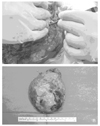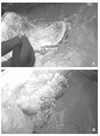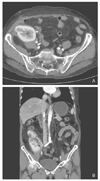Abstract
The treatment of kidney tumors with the technique of nephrone sparing surgeries continues to evolve. The oncological efficacy and outcomes in the treatment of small tumors in carefully selected patients treated with partial nephrectomy is similar with those of radical surgery. However, in some cases, partial nephrectomy is a challenging task for urologic surgeons-like too large renal mass or multifocal hereditary tumors. Renal autotransplantation was first performed in 1963 for ureteral injury by J.D. Hardy. In the following decade many surgeons used and improved the ex situ bench surgery and autotransplatation for benign or malignant renal conditions. These techniques have been used in the surgical management of complex ureteral injuries, renal artery aneurysms, renovascular hypertension, and complex renal tumors. The development of techniques for preserving renal functions during the ischemia and surgical skills has allowed good functional results of renal autotransplantation. However, it is important to remind that extensive excision and prolonged ischemia can lead to a poor graft function after renal autotransplantation. Nowadays, in clinical fields, the role of ex situ bench surgery and autotransplantation has become very limited, but remains an another option for preserving renal functions in various benign and even in malignant renal diseases, ranging from multiple artery reconstructions to complex renal tumors.
Figures and Tables
Figure 1
Preoperative abdomen CT shows huge renal mass in right single kidney (A) Axial view (B) Coronal view.

References
2. Campbell SC, Novick AC. Management of local recurrence following radical nephrectomy or partial nephrectomy. Urol Clin North Am. 1994. 21:593–599.

3. Campbell SC, Novick AC. Surgical technique and morbidity of elective partial nephrectomy. Semin Urol Oncol. 1995. 13:281–287.
4. Duque JL, Loughlin KR, O'Leary MP, Kumar S, Richie JP. Partial nephrectomy: alternative treatment for selected patients with renal cell carcinoma. Urology. 1998. 52:584–590.

5. Lee CT, Katz J, Shi W, Thaler HT, Reuter VE, Russo P. Surgical management of renal tumors 4 cm. or less in a contemporary cohort. J Urol. 2000. 163:730–736.

6. Hardy JD, Eraslan S. Autotransplantation of the Kidney for High Ureteral Injury. J Urol. 1963. 90:563–574.

7. Ota K, Mori S, Awane Y, Ueno A. Ex situ repair of renal artery for renovascular hypertension. Arch Surg. 1967. 94:370–373.

8. Belzer FO, Keaveny TV, Reed TW, Pryor JP. A new method of renal artery reconstruction. Surgery. 1970. 68:619–624.
9. Husberg BS, Bakshandeh K, Lilly J, Pfister R, Stables DP, Starzl TE. Five cases and five unusual indications for autogenic renal transplantation. Acta Chir Scand. 1975. 141:557–563.
10. Putnam CW, Halgrimson CG, Stables DP, Pfister R, Beart RW Jr, Kootstra G, Haberal M, Atkins D, Starzl TE. Ex vivo renal perfusion and autotransplantation in treatment of calculous disease or abdominal aortic aneurysm. Urology. 1975. 05:337–342.
11. Novick AC, Magnusson M, Braun WE. Multiple-artery renal transplantation: emphasis on extracorporeal methods of donor arterial reconstruction. J Urol. 1979. 122:731–735.

12. Sacks SA, Petritsch PH, Kaufman JJ. Canine kidney preservation using a new perfusate. Lancet. 1973. 1:1024–1028.

13. Basso N, Terragno NA. History about the discovery of the renin-angiotensin system. Hypertension. 2001. 38:1246–1249.

15. Gruntzig A, Kuhlmann U, Vetter W, Lutolf U, Meier B, Siegenthaler W. Treatment of renovascular hypertension with percutaneous transluminal dilatation of a renal-artery stenosis. Lancet. 1978. 1:801–802.
16. van der Velden JJ, van Bockel JH, Zwartendijk J, van Krieken JH, Terpstra JL. Long-term results of surgical treatment of renal carcinoma in solitary kidneys by extracorporeal resection and autotransplantation. Br J Urol. 1992. 69:486–490.

17. Desai D, Nicholls G, Duffy PG. Bench surgery with autotransplantation for bilateral synchronous Wilms' tumor: a report of three cases. J Pediatr Surg. 1999. 34:632–634.

18. Eisenberg ML, Lee KL, Zumrutbas AE, Meng MV, Freise CE, Stoller ML. Long-term outcomes and late complications of laparoscopic nephrectomy with renal autotransplantation. J Urol. 2008. 179:240–243.

19. Novick AC, Stewart BH, Straffon RA. Extracorporeal renal surgery and autotransplantation: indications, techniques and results. J Urol. 1980. 123:806–811.





 PDF
PDF ePub
ePub Citation
Citation Print
Print





 XML Download
XML Download